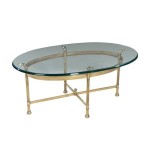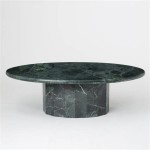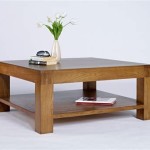Advertising Coffee Table Books: A Guide for Professionals
Advertising coffee table books represent a unique and impactful strategy for brands seeking to elevate their image, connect with target audiences on an emotional level, and create a lasting impression. Unlike traditional advertising methods that often focus on direct sales, these books aim to tell a story, showcase a brand's values, and provide an aesthetically pleasing and informative experience for the reader. This guide explores the strategic considerations, design principles, and production processes involved in creating effective advertising coffee table books for professionals seeking to leverage this medium.
The core appeal of a coffee table book lies in its ability to combine visual appeal with substantive content. When executed correctly, an advertising coffee table book transcends the realm of mere marketing material and becomes a collectible item, a conversation starter, and a tangible representation of the brand's identity. It serves as a constant reminder of the brand, subtly reinforcing its message and values over time.
Understanding the Strategic Value of Coffee Table Books in Advertising
The decision to invest in an advertising coffee table book should be driven by clearly defined objectives. It is essential to identify the specific marketing goals the book is intended to achieve. These goals may include enhancing brand perception, reinforcing brand values, educating target audiences about the brand's history and evolution, celebrating a milestone or anniversary, or strengthening relationships with key clients and stakeholders.
Defining the target audience is also critical. A thorough understanding of the intended readership's interests, preferences, and values will inform the book's content, design, and overall tone. The book's narrative should resonate deeply with the target audience, fostering a sense of connection and loyalty to the brand. For instance, a luxury watch brand might create a book showcasing the artistry and craftsmanship involved in watchmaking, targeting discerning collectors and enthusiasts who appreciate quality and tradition. A tech company, on the other hand, might focus on innovation, highlighting its technological advancements and their impact on society.
The book's content should be carefully curated to align with the defined objectives and target audience. It should offer a compelling narrative that captures the essence of the brand and its story. This may involve incorporating historical information, behind-the-scenes glimpses into the company's operations, interviews with key personnel, stunning photography, and insightful commentary. The content should be engaging, informative, and visually appealing, avoiding overt promotional messaging and focusing instead on creating a valuable and enjoyable reading experience.
Unlike a flyer or a digital advertisement, the coffee table book offers longevity. It is a physical item that occupies a prominent space in homes and offices, constantly reminding readers of the brand. This repeated exposure contributes to brand recall and reinforces the desired brand image. Furthermore, coffee table books are often shared and passed around, extending their reach beyond the initial target audience. This word-of-mouth marketing can be particularly valuable in building brand awareness and generating positive sentiment. A well-designed and compelling book can become a valuable asset for the brand, generating returns far beyond its initial cost.
Design Principles for Effective Advertising Coffee Table Books
The visual design of an advertising coffee table book is paramount to its success. The book's aesthetic should reflect the brand's identity and appeal to its target audience. This involves careful consideration of factors such as typography, layout, color palette, and image selection. The design should be consistent throughout the book, creating a cohesive and visually appealing experience for the reader.
High-quality photography is essential. Images should be sharp, well-composed, and visually engaging. They should capture the essence of the brand, its products, and its values. The photographs should be carefully selected to complement the text and enhance the overall narrative. Professional photographers with experience in advertising and editorial photography should be considered to ensure the highest quality results.
Typography plays a crucial role in the book's readability and overall aesthetic. The font choices should be legible and visually appealing, reflecting the brand's personality. Different fonts can be used for headings, body text, and captions to create visual hierarchy and guide the reader through the book. Careful attention should be paid to font size, line spacing, and kerning to ensure optimal readability.
The layout of the book should be clean and uncluttered, allowing the content to breathe. The use of white space is important to create visual balance and prevent the book from feeling overwhelming. Images and text should be carefully positioned to create a dynamic and engaging reading experience. The layout should also be consistent throughout the book, reinforcing the overall design aesthetic.
Beyond the visual aspects, the tactile experience of the book is significant. The choice of paper stock, binding, and cover materials can significantly impact the reader's perception of the book's quality and value. Premium paper stocks, such as coated art paper or uncoated textured paper, can enhance the visual appeal and tactile feel of the book. High-quality binding techniques, such as case binding or Smyth sewn binding, can ensure the book's durability and longevity. The cover design should be eye-catching and reflective of the book's content, enticing readers to pick it up and explore further.
Production and Distribution of Advertising Coffee Table Books
The production process for an advertising coffee table book requires careful planning and execution. Selecting a reputable printer with experience in producing high-quality coffee table books is crucial. The printer should have the necessary equipment and expertise to handle the complex printing and binding processes involved. It's important to request samples of the printer's previous work to assess their quality and capabilities.
Pre-press preparation is a critical step in the production process, ensuring that the files are properly formatted and optimized for printing. This involves checking for errors in the text and images, ensuring that the color profiles are accurate, and creating a proof for review. The proof should be carefully scrutinized to identify any issues before the book goes to print.
Printing techniques can significantly impact the book's visual quality. Offset printing is the most common method for producing high-quality coffee table books, offering excellent color reproduction and sharpness. Digital printing may be a viable option for smaller print runs, but it may not offer the same level of quality as offset printing. Special printing effects, such as spot varnish, embossing, and foil stamping, can be used to enhance the book's visual appeal and create a more luxurious feel.
Distribution strategies should align with the book's objectives and target audience. The book can be distributed through various channels, including direct mail, events, trade shows, corporate gifts, and online retailers. Careful consideration should be given to the most effective channels for reaching the intended readership. For example, a luxury brand might distribute its coffee table book through its flagship stores and partner boutiques, while a B2B company might distribute it to key clients and prospects at industry events.
Measuring the effectiveness of an advertising coffee table book campaign can be challenging, but it is essential to assess its impact on brand perception and awareness. This can be done through surveys, focus groups, and social media monitoring. Tracking website traffic and sales data can also provide insights into the book's influence on customer behavior. The feedback gathered from these assessments can be used to inform future marketing campaigns and improve the effectiveness of subsequent advertising coffee table books.
Furthermore, establishing a clear project timeline with specific milestones is essential for managing the production process efficiently. This timeline should include deadlines for content creation, design, pre-press preparation, printing, binding, and distribution. Regular communication with the design team, printer, and other stakeholders is crucial for ensuring that the project stays on track and within budget. Regular communication between stakeholders will also help provide real-time insight on the project to keep team members informed.

How To Make A Coffee Table Book 10 Step Guide Blurb Blog

Oh How To Make A Coffee Table Book And Publish It Design Studio

Oh How To Make A Coffee Table Book And Publish It Design Studio

Oh How To Make A Coffee Table Book And Publish It Design Studio

Oh How To Make A Coffee Table Book And Publish It Design Studio

How To Make A Coffee Table Book 10 Step Guide Blurb Blog

Oh How To Make A Coffee Table Book And Publish It Design Studio

How To Make A Coffee Table Book 10 Step Guide Blurb Blog

50 Coffee Table Books That Are So Beautiful It Hurts

Oh How To Make A Coffee Table Book And Publish It Design Studio
Related Posts








